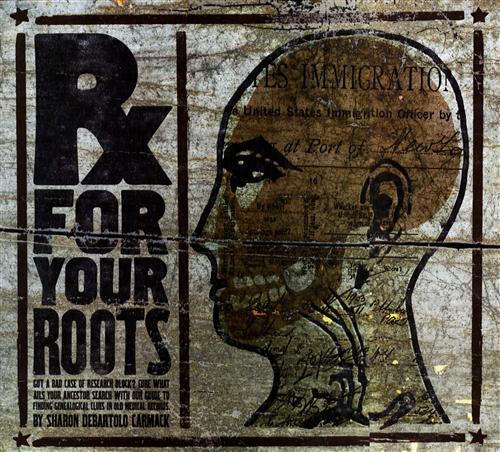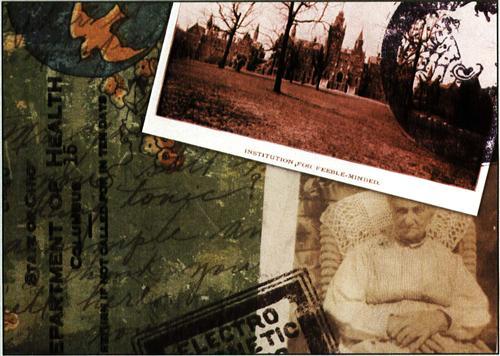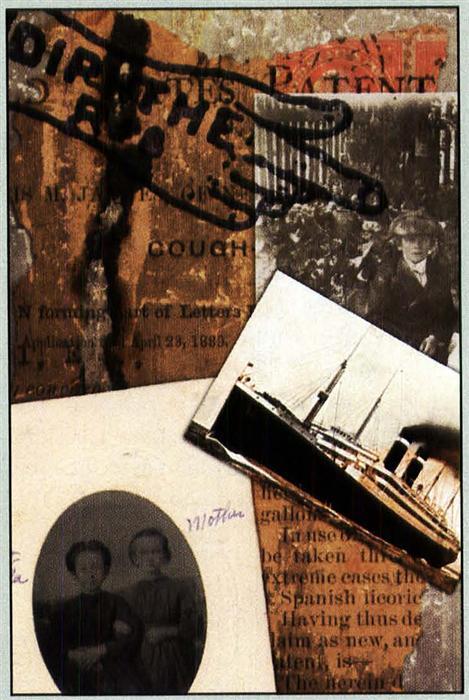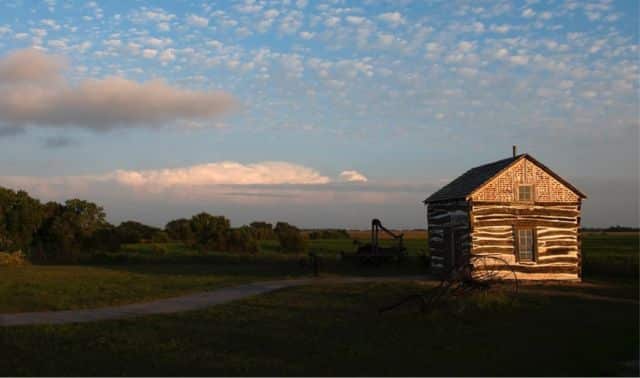
A visit to the doctor or a stay in the hospital wasn’t as common for our ancestors as it is for us today. But back then, it had nothing to do with getting HMOs to pay for care or the rising cost of prescriptions. In our ancestors’ day, a doctor was sometimes your worst enemy. After all, prior to the early 20th century, you might be treated with blood-sucking leeches to drain you of poisons, nasty concoctions that caused severe vomiting or diarrhea to purge your system, or ice-water baths to rid you of fevers or treat hysteria. Morphine was dispensed as a medicine, and surgery was performed with little or no anesthesia. (And you thought a mammogram or proctology exam was torture!)
But just like today, when our ancestors did dare to seek medical treatment — or had no other choice — those not-so-routine visits generated paperwork. These ancestral medical records can reveal not only vital information about your family health history, but also basic genealogical facts. Indeed, they may be just what the doctor ordered to break through the brick walls blocking your research.
A few 19th-century hospital records are available in hospital and historical archives, and microfilmed copies may be available through the Family History Library (FHL) in Salt Lake City. When you check the library catalog at <www.familysearch.org>, go to Place Search and type in the city, town or county of interest. You’ll get a subject category for medical records if any exist for that locality; click the link for detailed entries. For example, under New Orleans, La., you’d find:
• Admission books, 1829-1899, Charity Hospital
• City Physician’s Office records, 1888
• Hospital register and index, 1859-1899, Hotel Dieu Hospital
• Hospital register, 1818-1835, 1867-1870, Charity Hospital
• Hospitals’ general register of patients, 1865, City Commissioner
• Infirmary records, 1855-1934, Touro Infirmary
• Insanity examinations, 1888, City Physician
• Records of patients, 1874-1879, City Smallpox Hospital
You could then borrow the microfilm of these records through your local Family History Center.
If you’re researching female ancestors, the records of Chicago’s Northwestern Memorial Hospital may be of particular interest. These records covering 1896 to 1933 document births, abortions and miscarriages for thousands of women who lived in the area, primarily immigrant women. Information varies from year to year. Earlier records give the woman’s married name, her street address, the number of living children she had delivered (“para”), the number born at term, her ethnicity (many records were for Russian Jews, some for Irish Catholics, Polish Catholics and American Protestants), the person or agency that referred her (“thro former patient” or “thro Hull House,” for example), her condition (“urgent, threatened abortion in 3rd month”), the case number and her admission date. Later records provide the same vital stats. They also list how many living children the woman delivered and how many were born at term, when she was expected to deliver (“confinement”), whether her labors were normal and whom she was attended by (the physician and student). The most recent records give information commonly found on birth certificates, such as the wife’s maiden name, the husband’s name, both parents’ birthplaces and the baby’s weight and name. The records are grouped by year and aren’t indexed. But if you have a female immigrant ancestor who lived in Chicago between 1896 and 1933 near Northwestern Hospital, it may be worth your time to do a page-by-page search.
Here is a typical entry from one of the more recent registers:
MARY RUDOLPH SALATERSKI
June 1, [1932]
1474 W. Huron 3rd floor
Polish Catholicpara iii 2 at term expects confinement Aug. 29, 1932labors [of previous delivery] normal: 2 (1 [birth by] midwife)attended by Dr. Bradenman studentBruder 8-19-1932
Diagnosis:… male 9 [lbs.] case or confinement #327
Mother’s birthplace: Ill.
Age 25 Maiden name: Smolen
Father’s birthplace: Poland Age 35
Baby’s name: Rudolph Jr.
Battling Your Way to Veterans’ Files
Who knows? That record might be the only surviving clue to Mary’s maiden name, Smolen. If your ancestor was treated in a state or federal veterans hospital, those records may be kept for years beyond what you’d hope for from a private, civilian hospital. More recent records — typically, from the past 72 years — will still be restricted by privacy laws.
Surviving Civil War hospital records wouldn’t be restricted, however. To search for these documents, you first need to get your ancestor’s compiled military service record to see if he spent any time in a hospital during the war. You can learn how to get these records at <www.archives.gov/research_room/genealogy/research_topics/military.html>or in James C. Neagles’ US Military Records: A Guide to Federal and State Sources (Ancestry).
The military record alone may give you detailed medical information. According to Francis “Frank” Conway Fitzhugh’s service record from Confederate Soldiers Who Served from the State of Virginia, for example, he apparently spent more time on sick leave than in action. Five months after his enlistment, he was in the Richmond Hospital (July 6, 1862). On May 3, 1863, he was wounded in the left thigh at Chancellorsville and sent to a hospital at Howard’s Grove three days later. He was transferred to the Charlottesville hospital March 16 and furloughed March 25. He was admitted to the Charlottesville hospital again in July with debility, returning to duty by the end of the month. A year later, he got typhoid fever and was admitted to Chimborazo Hospital in Richmond; the following month, he was sent back to Charlottesville hospital. He returned to duty on Sept. 19, 1864, and was later paroled at Appomattox, April 9, 1865.
That’s a lot of information, but with those facts and a little luck, you can learn more from the actual medical records. For Frank Fitzhugh, I first checked the FHL catalog under Richmond, Va., medical records and Civil War records. I found several entries, but none for the hospitals named in his military record. On Google <www.google.com>, I typed in Civil War hospitals Richmond and found Civil War Richmond <www.mdgorman.com>. This site has an index to Civil War hospitals and provides citations to records (not transcriptions, though). I learned, for example, that the records for Chimborazo Hospital, where Fitzhugh was admitted in 1865 with typhoid fever, are at the National Archives, but the Richmond National Battlefield Park has microfilm copies of some of them. Those registers are arranged by date admitted, not by name. The park historian has prepared a guide to using the records; it’s on the Web at <www.mdgorman.com/chimborazo_microfilm_guide.htm>.
If your Internet search isn’t as successful, and if the records you need aren’t available through the FHL, check the National Archives holdings. But you’ll need to visit the Archives in person or hire a researcher to check them for you.
Marie Varrelman Melchiori, a certified genealogical records specialist and lecturer who’s a Civil War-records expert, points out that Union and Confederate hospital records are arranged differently. “The strong point of the Confederate records is that they can be searched by hospital, so you would know who else was in the hospital at the same time as your ancestor,” says Melchiori. “The records for Union volunteers are arranged first by state, then by numerical designation of the organization, then by initial letter of the surname of the soldier.” The arrangement for the Union’s regular army is different yet. Melchiori suggests consulting Medical and Surgical History of the Civil War (Broadfoot Publishing Co., in library reference sections, formerly titled The Medical and Surgical History of the War of the Rebellion [1861-1865]), which has an every-name index (the original version was indexed only by the surgeon’s name).
Don’t forget that your ancestor’s military pension file will also hold medical information if the soldier applied for his pension because of a physical ailment or disability. In fact, these records may give you more details about your ancestor’s bowels, gastric disorders and sex life than you really wanted to know. Since the applicant had to convince the pension office that he truly was in need, you may find graphic letters and affidavits from the applicant, his spouse, his friends and military comrades, and his physician. Check for pension records on microfilm in the holdings of the FHL and the National Archives.
Is There a Doctor (or Midwife) in the House?
Another type of medical record to search for is midwives’ or doctors’ journals that may have been microfilmed or published. In 1906, for example, 500 midwives were practicing in New York City alone; other urban areas, such as Chicago and Boston, also had large numbers of midwives. Immigrant women in particular felt more comfortable with a midwife who spoke their language than with an American male doctor. Many of these midwives kept journals. Surviving midwives’ journals may have been published, such as the Pulitzer Prize-winning A Midwife’s Tale: The Life of Martha Ballard, Based on Her Diary, 1785-1812, by Laurel Thatcher Ulrich (Vintage Books). Or you may be able to locate them on microfilm or as a manuscript collection in a library or other repository. Check the FHL catalog and the National Union Catalog of Manuscript Collections, known as NUCMC <www.loc.gov/coll/nucmc/nucmc.html>.
Doctors, too, kept journals. The medical journal of John Winthrop Jr., Colonial governor of Connecticut in 1657 and 1659 to 1676, might help you find your 17th-century New England ancestors. Robert Charles Anderson, who’s transcribing the 1,000-page journal for publication by the Massachusetts Historical Society, explains that each town in Connecticut has a separate “book,” and each page contains about 10 entries. A typical entry consists of three parts, he says: an identifier, including the name and sometimes brief biographical information; a description of symptoms; and the prescription. Here are two examples:
17 MARCH 1656/7: “Jonathan Sacket almost 2 yeares old 2 gr: ½$ for wormes”
13 NOVEMBER 1666: “Rockwell Sameull his wife of Winsor the other side the great river she is Francis Bushnell’s daughter of Saybrook: paine in Stomacke….”
Winthrop’s entries, which cover from about 1656/1657 (the double dates arise from the switch to today’s Gregorian calendar) to mid-1669, not only give a glimpse into ancestors’ medical conditions, but, as these examples show, can also be a blessing for genealogists.
The published transcription won’t be available any time soon, however. It’s a painstaking project; Anderson has transcribed only a little more than 50 pages so far. “As if the ink damage, cramped handwriting, abbreviations and apothecary symbols did not already make deciphering the manuscript difficult enough,” says Anderson, “Winthrop occasionally threw up additional obstacles.” For some entries, “he resorted to Latin, sometimes in abbreviated form.” But you don’t have to wait: Ambitious researchers can find the original journal at the Massachusetts Historical Society in Boston (1154 Boylston St., 617-536-1608, <www.masshist.org>); it’s also available on microfilm there.
TB or not TB?
Did you have an ancestor who suffered from tuberculosis (TB)? Also known as consumption, TB claimed many lives in the late 19th and early 20th centuries. Those who contracted the disease may have spent time in one of the tuberculin sanitoriums around the country, creating records for you to find. Philip P. Jacobs’ The Campaign against Tuberculosis in the United States, Including a Directory of Institutions Dealing with Tuberculosis in the United States and Canada (National Association for the Study and Prevention of Tuberculosis) is a good starting place if there’s a family story of one of your ancestors contracting the disease and spending time in a sanitorium.
You may be surprised where you’ll find sanitorium archives. Once, I attempted to track down documents on a cousin who died in the early 1900s from TB. According to family stories, he’d spent time in a sanitorium at Saranac Lake, NY. I wrote to the Adirondack Genealogical-Historical Society in Saranac Lake, asking if it might have the old records or knew where they were archived. Spencer B. Newman, president of that society, responded that he couldn’t find any information on my relative. But he added, “The doctor admittance records were stored in the attic of the Saranac Lake airport and, about five years ago, someone decided to clean house without checking first. By chance, one of our members happened to be at the garbage dump when this was being done and managed to rescue about half of the records — we think. … We have had people who have been successful in finding records and many more unhappy.” I was one of the unhappy ones, but maybe you’ll be successful. Once you learn the name and location of an ancestor’s sanitorium, write to the local historical society to see where the records might be.
Seeking Asylum Records
Many of our ancestors, especially women, were committed to insane asylums. A good number of women committed to asylums were totally sane, but their husbands wanted to marry someone else, and a wife’s insanity was legal grounds for divorce in some states. Some men committed their wives simply for being outspoken. This was the case with Elizabeth Parsons Ware Packard, who defended religious opinions that conflicted with her church. At her husband’s direction, she was kidnapped in June 1860, examined by two doctors her husband hired, and then declared insane. She was kept in the Illinois State Hospital for the Insane for three years. A portion of her memoirs and those of other women committed to insane asylums have been published in Jeffrey Geller and Maxine Harris’s Women of the Asylum: Voices from Behind the Walls, 1840-1945 (Anchor Books).
Many women were committed for ailments that today would be labeled postpartum blues, menopause and manic depression or bipolar disease. Some were schizophrenic or had other mental disorders.
In the federal censuses for 1840, 1850, 1860, 1870 and 1880, look carefully in the column that denotes insane persons. A woman I was researching, Nancy Bane, had a tick mark in that column on the 1880 census. So I turned to the 1880 Schedule for the Defective, Dependent and Delinquent Classes, a supplement to that year’s census, which revealed that Bane had been a patient at the Central Ohio Institution and had 24 attacks of mania.
I wrote both the Gallia County Historical Society and the Ohio Historical Society, but neither was aware of a facility by the name of Central Ohio Institution. When Bane was committed, only one institution existed in the central part of the state: the Columbus State Hospital, perhaps more commonly known as the Central Ohio Institution or Lunatic Asylum. The Ohio Historical Society had admission books for the time when Bane would have been committed. These records are on microfilm, but Ohio law restricts searches to the closest living relative — which excluded me.
So I found a way in by the back door. A record of Bane’s commitment was filed in the probate court of Gallia County. This record was available to the public, and it contained details of an inquest to commit Bane, her admission into the lunatic asylum, subsequent admissions and a medical certificate giving more details on her symptoms: “talks incoherently going from one subject to another!;] no connection in her talk.” She had “finished her education” and was Protestant. Her general health before her two mania attacks was good, and the recovery from her former attacks was “incomplete.” Along with acute mania, her disease at the time was delusional insanity — she believed that her “children have been murdered.” She was also violent, noisy and suicidal, but “tidy.”
Frederick Howard Wines’ Report on the Defective, Dependent, and Delinquent Classes of the Population of the United States as Returned at the Tenth Census (June 1, 1880) (Government Printing Office), gives the location in each state of all the insane asylums in operation in the early 1880s. With this information, write a letter to the historical society in the area where the asylum existed, and ask if they know where the records are currently housed. If you can’t find or gain access to asylum papers, look to court records for commitment papers.
Counting on the Dead
While not normally considered medical records, mortality schedules give the deceased person’s name, sex, age, color (along with a mark for free or slave), marital status, birthplace, month of death, occupation, disease or cause of death and the number of days he or she was ill. These supplemental schedules to the federal census were taken for the census years 1850, 1860, 1870 and 1880, and list people who died in the 12 months prior to the official census date. More precisely, they cover June 1-May 31 of 1849-1850, 1859-1860, 1869-1870 and 1879-1880. A mortality schedule was also taken with the 1900 census in states that didn’t yet have statewide death registration, but after statistics had been compiled, the originals were supposed to be destroyed. Only Minnesota’s 1900 mortality schedules are known to have survived; they’ve been published by James W. Warren: Minnesota 1900 Census Mortality Schedule (Warren Research & Marketing).
Some federal mortality schedules have been indexed by Accelerated Indexing Systems on microfiche (available through the FHL), and some are being indexed on CD-ROM. For more information on mortality schedules, see Kathleen W. Hinckley’s Your Guide to the Federal Census (Betterway Books).
Mortality schedules were also sometimes taken as part of state censuses. These censuses were usually taken during the five-year period in between federal censuses, although the information can vary from what the federal mortality schedules reported. For example, the 1855 New York state census included deaths in the previous year but not the names of the people who died, while some of the other state mortality schedules used the same column headings as the federal ones. See Ann S. Lainhart’s State Census Records (Genealogical Publishing Co.).
Find it on the Web
• American Medical Association’s Deceased Physicals File
<www.ngsgenealogy.org/libama.htm>: Data on American physicians who died after 1905 and before 1965. The National Genealogical Society charges for a search, but these records are also available on microfilm from the FHL.
• Cyndi’s List — Medical
<www.cyndislist.com/medical.htm>: Links to information about medical and hospital records, medical staff and publications.
• Cyndi’s List — US Civil War Medicine & Hospitals
<www.cyndislist.com/medical.htm#CivilWar>: Has a few links to hospital information.
• Gen-Info by AEA
<freepages.genealogy.rootsweb.com/-censusresearch/lndex.htm>: Arranged by state, this site lists some hospitals, sanitoriums, medical schools and state institutions in the late 1800s and early 1900s.
• National Genealogical Society’s Family Health and Heredity Committee
<www.ngsgenealogy.org/comfamhealth.htm>: Promotes the value of researching and recording ancestral medical information.
• The Winthrop Papers
<muweb.millersville.edu/~winthrop>: An overview of the Winthrop medical journals project.
On the Bookshelf
• A Medical Miscellany for Genealogists by Jeanette L. Jerger (Heritage Books): Dictionary of medical terms used in our ancestors’ day.
• Your Guide to Cemetery Research by Sharon DeBartolo Carmack (Betterway Books): Contains a glossary of 19th-century causes of death and a chapter on death records.
From the February 2003 issue of Family Tree Magazine.






